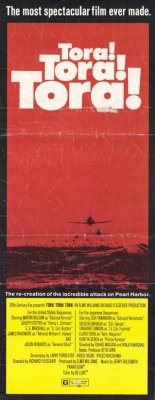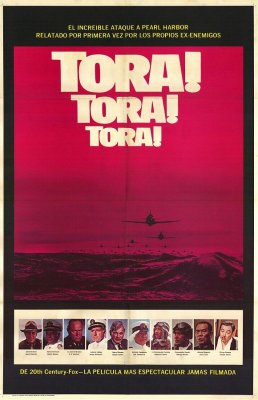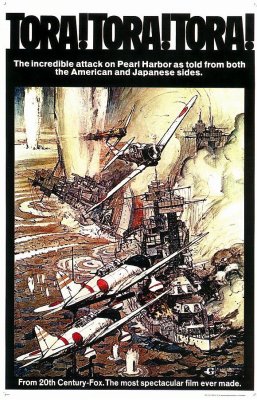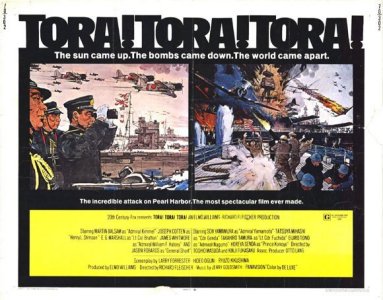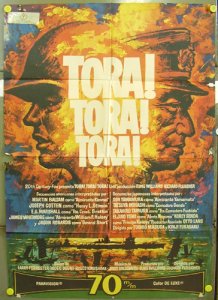| |

Get All The Greatest Big Band & Jazz Music On 10 Different CD's From The
Roaring 20's To The Swinging Jazz 30's And To The Post World War II Era...

The film opens with a change-of-command ceremony aboard the Japanese battleship Nagato,
flagship for the newly appointed Commander-in-Chief of the Combined Fleet Admiral Isoroku
Yamamoto; he takes command from Osami Nagano. The two discuss America's embargo against
Japan and its starving them of raw materials needed to fight the war. Both agree that a
war with the United States would be a complete disaster for Japan, but army hotheads and
politicians push through the alliance with Germany and start long term planning, believing
the U.S. is pre-occupied with the war in Europe. The U.S. has also moved their Pacific fleet
to Pearl Harbor, which Japanese officials regard as a "knife to the throat of Japan". Soon
Yamamoto orders the planning of a pre-emptive strike on American forces in order to give the
Japanese Navy a chance of defeating a more powerful enemy. Yamamoto believes Japan's only
hope is to annihilate the American Pacific fleet. Pearl Harbor commanders debate their
exposure to a torpedo attack but realize that torpedoes dropped from a plane will fall at
least 75 feet below the surface. Since Pearl Harbor is only 40 feet deep, they feel they
have a natural defense to torpedoes. But the Japanese have a plan to overcome this obstacle.
In a major intelligence victory, American intelligence in Washington manages to break the
Japanese Purple Code allowing the United States to intercept radio transmissions the Japanese
think are secret. American intelligence in Washington is seen collecting increasingly threatening
radio intercepts and conveying their concern to a White House staff that seems strangely
unresponsive. The American response to high-quality intelligence in general appears lax
although Pearl Harbor does increase air patrols and goes on full alert well before the raid.
Japanese commanders call on the famous Air Staff Officer Minoru Genda to mastermind the attack.
As the Japanese prepare for the attack, Admiral Kimmel and General Short, although hampered by
a critical intelligence report about the attack fleet being too slow coming to them, do their
best to enhance defenses. General Short calls for aircraft to be concentrated in the middle of
their airfields to protect them against sabotage. A few are moved to outlying airfields,
including two young Army lieutenants (Ken Taylor and George Welch) who are sent to Haleiwa,
a subsidiary airfield. A more prudent move by Short is his placement of new radar stations
including overcoming bureaucratic obstacles to their locations. Yamamoto is portrayed pressing
Japanese authorities to try to avoid war and blaming the Japanese Army command for pressing too
hard for war when peace is still an option. Yamamoto stresses that the United States is a mighty
foe who would be extremely dangerous to provoke. In order to defeat the United States, Japan
will have to invade the mainland and dictate terms of U.S. surrender on the White House steps,
an eventuality Yamomoto clearly sees as impossible to achieve. In a fortunate defensive move,
the U.S. sent two aircraft carriers, the USS Enterprise (CV-6) and Lexington (CV-2) to sea to
probe for the Japanese fleet although this did reduce the number of fighter aircraft available
to protect the remainder of the fleet which remained at Pearl Harbor. If Japan had been able to
destroy these aircraft carriers at Pearl Harbor, it would have been much more catastrophic for
the Americans. Japanese commanders should have considered aborting the mission. Their intelligence
revealed the carriers had left Pearl Harbor. But they had made a political decision to go to war
that facts could not disrupt.
On the morning of December 7, decision makers in Washington and Hawaii are seen enjoying a
leisurely routine while American intelligence works feverishly to interpret the coded
transmissions and learns the final message will be received precisely at 1:00pm Washington
time. American intelligence notes that the final message instructs the Japanese Ambassador
to destroy their code machines after they de-code the last of the 14 messages, an ominous
point. Attempts to convey this message to American commanders fail because they are enjoying
a Sunday of playing golf and horseback riding. Finally, Admiral Stark is informed of the
increased threat, but decides not to inform Hawaii until after calling the President,
although it is not clear if he takes any action at all. Finally at 11:30am Washington time,
Col. Bratton convinces army Chief of Staff Marshall that a greater threat exists and Marshall
orders that Pearl Harbor be notified of a suspected impending attack. An American destroyer
also notes a Japanese submarine trying to slip through the defensive net and enter Pearl
Harbor, sinks it, and notifies Pearl Harbor. The Captain at Pearl Harbor dismisses the report
thinking the new commander of the destroyer must have been over-excited. Just after 7am the
two airmen posted at the remote radar unit spot the incoming Japanese aircraft and inform the
Pearl Harbor Information Center, but the Lieutenant in charge dismisses the report, thinking
it is a group of American B-17 planes coming from the mainland and frankly too tired to care
(he simply said in a tired voice, "Don't worry about it, then hangs up the phone.)
The Japanese intend for their declaration of war to be issued at 1pm Washington time,
30 minutes before the attack. However, the typist for the Japanese ambassador is slow,
and cannot de-code the 14th part fast enough. A final attempt to warn Pearl Harbor is
stymied by poor atmospherics and bungling when the telegram is not marked urgent; it
will be received by Pearl Harbor after the attack. The incoming Japanese fighter pilots
are pleasantly surprised when there isn't even any anti-aircraft fire as they approach
the base. As a result, the squadron leader radios in the code phrase marking that
complete surprise for the attack has been achieved, "Tora, Tora, Tora."
Once the attack is launched, America's response is desperate and only partially effective.
Upon seeing the Japanese low-level bombers, an American officer instructs his colleague to
get the tail numbers so the pilot can be reported for safety violations; he thinks they are
American planes. The sight of the offending plane then deliberately dropping a bomb on the
base dispels that misapprehension. The scene switches to a band playing the National Anthem
aboard the USS Nevada as Old Glory is raised. Noticing the large amount of Japanese planes,
the band hastily finishes the song before manning their battlestations, finishing just as a
bomb lands close to the ship. Anti-aircraft weapons are engaged, which includes seaman Doris
Miller using an unattended gun, but with limited success. The actual B-17 pilots coming in
from the mainland, un-armed and out of gas, are a bit surprised to fly into a war, but are
able to land safely despite friendly fire from American anti-aircraft guns. The aircraft
security precautions prove a disastrous mistake that allows the Japanese aerial forces to
destroy the US P-40 Warhawk fighters on the ground with ease, thereby crippling an effective
aerial counter-attack; All the planes on the runways at the major airfields were destroyed
either as they took off or while they were still parked. Two American fighter pilots
(portrayals of second lieutenants Ken Taylor and George Welch) race to Haleiwa and manage
to take off, as the Japanese have not hit the smaller airfields. The catastrophic damage
to the base is well detailed, with sailors fighting as long as they can and then abandoning
sinking ships and jumping into the water with burning oil on the surface.
At the end, with the U.S. base in flames, its frustrated commanders finally get the telegram
warning them of the danger. In Washington, the distraught Japanese ambassador, helpless to
explain the late ultimatum and the unprovoked sneak attack, is bluntly rebuffed by the
Secretary Of State. Finally, Admiral Yamamoto is seen lamenting the fact that the Americans
did not receive the declaration of war until 55 minutes after the attack started and noting
that nothing would infuriate the Americans more. He is quoted as saying "I fear that all we
have done is awakened a sleeping giant, and filled him with a terrible resolve." While this
indeed reflects what Yamamoto felt, the quote is now believed to be a fabrication.
|
|
Starring ... |
Martin Balsam, Joseph Cotten, E.G. Marshall, Tatsuya Mihashi, James Whitmore,
So Yamamura, Jason Robards, Eijiro Tono, Takahiro Tamura
|
Directors: Richard Fleischer, Kinji Fukasaku, Toshio Masuda
Producers:
Elmo Williams, Darryl F. Zanuck, Keinosuke Kubo, Otto Lang
and Masayuki Takagi
Released - September 23, 1970
Length - 144 minutes
Music Composer: Jerry Goldsmith
Movie Distributed by 20th Century Fox
|

To search and purchase anything related with the movie listed on this page
Tora! Tora! Tora!
,then simply just click on this link here.
Thank you...
Click on VHS tape
for enlarged view
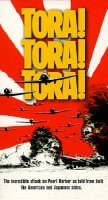
CLICK HERE
to buy this VHS tape
|
|
|
MOVIE THEME SONGS
Tora! Tora! Tora!
'Main Title' - MP3 ... 1.11M

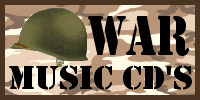
|
Click CD for enlarged view
or Download as Album Art
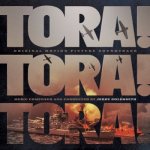
CLICK HERE to buy this CD
|
|
Click on DVD tape
for enlarged view
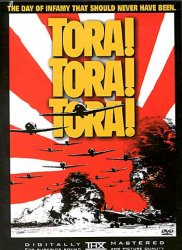
CLICK HERE to Purchase DVD
|
Click on DVD tape
for enlarged view
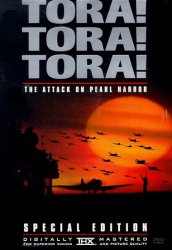
CLICK HERE to Purchase DVD
|
Click on DVD tape
for enlarged view
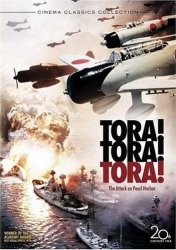
CLICK HERE to Purchase DVD
|
Click on Blu-Ray
for enlarged view
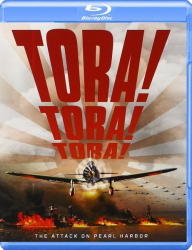
CLICK HERE to Buy Blu-Ray
|



 |
View The Movie Image Library
(Movie Stills) -
Tora! Tora! Tora!
|
OR |
Click Here To View

|

Return to the "World War II" Index Page
Get your favorite "MILITARY & WAR" videos in the BLU-RAY, DVD, VHS format or the
CD soundtracks which can be purchased through
AMAZON.com .
 Thank you very much... Thank you very much...


Please Help Support This Site By Purchasing A Couple Of CD's

Come Visit The Historic Complete Victory At Sea Online Homepage
|















